Boiling Points of Compounds | What Determines Boiling Point? In 2000, Kellar Autumn, who leads a multi-institutional gecko research team, found that geckos adhered equally well to both polar silicon dioxide and nonpolar gallium arsenide. van der Waals dispersion forces are the primary intermolecular attractions between one molecule and its neighbors. sodium oxide has a higher melting point than sulfur trioxide. Expert Answer. In this video we'll identify the intermolecular forces for HCN (Hydrogen cyanide). Substances with the highest melting and boiling points have covalent network bonding. E) covalent bonding., Ammonia's unusually high melting point is the result of A) London dispersion forces. Which forces are present between molecules of carbon dioxide in the solid state? What kind of intermolecular forces act between a hydrogen sulfide molecule and a carbon monoxide molecule? A DNA molecule consists of two (anti-)parallel chains of repeating nucleotides, which form its well-known double helical structure, as shown in Figure \(\PageIndex{10}\). A. Electrostatic Deduce and explain whether ethanol or A has the higher boiling point. What is the difference between covalent network and covalent molecular compounds? The intermolecular forces hold HI molecules together would be dipole forces, and dispersion forces. Chegg Products & Services. Thus, nonpolar Cl2 has a higher boiling point than polar HCl. Explain why diamorphine passes more readily than morphine through theblood-brain barrier. Such molecules experience little or no dipole-dipole interactions. The other atoms have more affinity for the shared electrons, so they become slightly negatively charged and hydrogen becomes slightly positively charged. Copy. Instead, it vaporizes to a gas at temperatures above 3,500C. When ethyl iodide is heated with excess of alcoholic ammonia, under . Amy holds a Master of Science. High School Physical Science: Homework Help Resource, High School Physical Science: Tutoring Solution, General Chemistry Syllabus Resource & Lesson Plans, SAT Subject Test Chemistry: Practice and Study Guide, CSET Science Subtest II Chemistry (218): Practice & Study Guide, Science 102: Principles of Physical Science, DSST Principles of Physical Science: Study Guide & Test Prep, Principles of Physical Science: Certificate Program, High School Chemistry: Homework Help Resource, College Chemistry: Homework Help Resource, High School Physical Science: Help and Review, Create an account to start this course today. These include: Keeping these in mind, choose the best solution for the following problems. Exothermic reactions: Exothermic reactions are reactions that release energy to their surroundings. Identify the Methanol has a lower molar mass than chloromethane. Which molecule would have the largest dispersion molecular forces among the other identical molecules? Diamond is extremely hard and is one of the few materials that can cut glass. Explain your reasoning. Because CH3OCH3 is polar, it will also experience dipole-dipole attractions. . Identify the intermolecular forces present in hydrogen iodide in the liquid state, HI (l). Both solid fats and liquid oils are based on a triacylglycerol structure, where three hydrophobic hydrocarbon chains of varying length are attached to a glycerol backbone through an ester functional group (compare this structure to that of the membrane lipids discussed in section 2.4B). Recall from the Sections 4.4 and 4.5, on chemical bonding and molecular geometry that polar molecules have a partial positive charge on one side and a partial negative charge on the other side of the moleculea separation of charge called a dipole. An attractive force between HCl molecules results from the attraction between the positive end of one HCl molecule and the negative end of another. copyright 2003-2023 Study.com. Their boiling points, not necessarily in order, are 42.1 C, 24.8 C, and 78.4 C. Sodium chloride (Figure \(\PageIndex{3}\)) is an example of a substance whose particles experience ionic interactions (Table \(\PageIndex{1}\)). Deduce the order of increasing solubility in water of the three compounds. Which combination of properties is correct? A molecule with a net unequal distribution of electrons in its covalent bonds is a polar molecule. Its chemical formula is HI. Of particular interest to biologists (and pretty much anything else that is alive in the universe) is the effect of hydrogen bonding in water. A. What are strongest intermolecular force in hydrogen iodide? A hydrogen bond is an intermolecular attractive force in which a hydrogen atom, that is covalently bonded to a small, highly electronegative atom, is attracted to a lone pair of electrons on an atom in a neighboring molecule. Predict which will have the higher boiling point: \(\ce{ICl}\) or \(\ce{Br2}\). c) The hydrogen bonding in ice leads to a very open structure with wasted space in it. A. What is the correct order of increasing boiling point? 2. Discuss the volatility of Y compared to Z. All of the same principles apply: stronger intermolecular interactions result in a higher melting point. In this section, we will discuss the three types of IMF in molecular compounds: dipole-dipole, hydrogen bonding and London dispersion forces. Its got weak van der waals forces as it is a simple molecule - these intermolecular forces are weak . Aqueous solutions of HI are known as hydroiodic acid or hydriodic acid, a strong acid. The bonding between atoms in the individual molecule is covalent but the attractive forces between the molecules are called intermolecular forces (IMF). Geckos feet, which are normally nonsticky, become sticky when a small shear force is applied. These attractive forces are sometimes referred to as ion-ion interactions. - Foods, Benefits & Deficiency Symptoms, What Is Gastritis? English This greatly increases its IMFs, and therefore its melting and boiling points. Dipole & Dipole Moment | What is Molecular Polarity? Which correctly states the strongest intermolecular forces in the compounds below? question_answer. Explain your reasoning. The H-bonding of ethanol results in a liquid for cocktails at room temperature, while the weaker dipole-dipole of the dimethylether results in a gas a room temperature. The boiling point of hydrogen bromide is -67 C. What kind of intermolecular forces act between a hydrogen iodide molecule and a chlorine monofluoride molecule Get the answers you need, now! Comparing the melting points of benzene and toluene, you can see that the extra methyl group on toluene disrupts the molecule's ability to stack, thus decreasing the cumulative strength of intermolecular London dispersion forces. Ans. Thus, diatomic bromine does not have any intermolecular forces other than dispersion forces. In hydrogen iodide hydrogen is connected to iodine which is only electronegative to form a dipole that creates permenant dipole-dipole interactions. The interaction between an undissociated hydrogen halide molecule and a water molecule. A dipole-dipole force is when the positive side of a polar molecule attracts the negative side of another polar molecule. B hydrogen bromide has weaker London forces than hydrogen iodide. Hydrogen iodide (HI) is a chemical compound. Answer 4: E. There are intermolecular forces between neutral non-polar atoms called London dispersion (Van der Waals) interactions. Because ionic interactions are strong, it might be expected that potassium chloride is a solid at room temperature. a) Si b) c) Ted) BiS. A. In order for this kind of bond to work, the molecules need to be very close to each other, like they are in a liquid. These result in stronger instantaneously induced dipole-(induced) dipole forces (london forces) in HI than HCl that require more energy to overcome Note: If there is more than one type of intermolecular force that acts, be sure to list them all, with a comma between the name of each force. Which series shows increasing boiling points? Second, h 2. A few did not realise that the question referred to the compounds already mentioned. Carbon dioxide (CO2) and carbon tetrachloride (CCl4) are examples of such molecules (Figure \(\PageIndex{6}\)). In contrast to intramolecular forces, such as the covalent bonds that hold atoms together in molecules and polyatomic ions, intermolecular forces hold molecules together in a liquid or solid.Intermolecular forces are generally much weaker than covalent bonds. VIDEO ANSWER: We have to answer a question related to h, 2, o, and hexene. A polar molecule is a molecule with a slightly positive side and a slightly negative side. Hydrogen bonds are important in the properties of water and in certain biological molecules, such as proteins. CO and N2 are both diatomic molecules with masses of about 28 amu, so they experience similar London dispersion forces. Because CO is a polar molecule, it experiences dipole-dipole attractions. Accessibility StatementFor more information contact us atinfo@libretexts.orgor check out our status page at https://status.libretexts.org. What kind of intermolecular forces act between a hydrogen bromide molecule and a chloroacetylene (C2HCI) molecule? The cumulative effect of millions of hydrogen bonds effectively holds the two strands of DNA together. Therefore, we can compare the relative strengths of the IMFs of the compounds to predict their relative boiling points. What accounts for this variability? However, when the mass of a nonpolar molecule is sufficiently large, its dispersion forces can be stronger than the dipole-dipole forces in a lighter polar molecule. The major intermolecular forces include dipole-dipole interaction, hydrogen . The strongest intermolecular interactions between ethyl alcohol (CH3CH2OH . It reacts with oxygen to make iodine and water. Consider a polar molecule such as hydrogen chloride, HCl. Covalent network compounds contain atoms that are covalently bonded to other individual atoms in a giant 3-dimensional network. The large electronegativity difference between hydrogen atoms and several other atoms, such as fluorine, oxygen and nitrogen, causes the bond between them to be polar. Diamond is composed entirely of carbon atoms, each bonded to four other carbon atoms in a tetrahedral geometry. The symmetric hydrogen bond is a type of a three-centre four-electron bond. In the case of hydrogen iodide there is a large electronegativity difference between the H and I so there will be dipole-dipole interactions. (A) polarity (B) polarizability (C) dipole moment (D) van der Waals radius . Alcohols can form intermolecular hydrogen bonds due to their high polarity whereas, ether cannot. Because the atoms on either side of the covalent bond are the same, the electrons in the covalent bond are shared equally, and the bond is a nonpolar covalent bond. Hydrogen bonds are dipole-dipole forces. Of course you have, given that it is the strongest intermolecular force, and operates when hydrogen is bound to a STRONGLY electronegative element the which polarizes electron-density towards itself, and the resultant charge. 14. The reactions of the benzimidazole nitrogen atoms and the exocyclic amino group of 2-aminobenzimidazole with CS2 in NaOH basic medium followed by methylation with methyl iodide was explored. Since CH3CH2CH3 is nonpolar, it may exhibit only dispersion forces. In a sample of hydrogen iodide, are the most important intermolecular forces. In vegetable oils, the hydrophobic chains are unsaturated, meaning that they contain one or more double bonds. Using a flowchart to guide us, we find that HCN is a polar molecule. Arrhenius Acid Equations & Examples | What is an Arrhenius Acid? Predict which will have the higher boiling point: N2 or CO. The properties of liquids are intermediate between those of gases and solids, but are more similar to solids. D) dipole-dipole forces. Intermolecular forces are the electrostatic interactions between molecules. This is because impurities disrupt the ordered packing arrangement of the crystal, and make the cumulative intermolecular interactions weaker. Because it is able to form tight networks of intermolecular hydrogen bonds, water remains in the liquid phase at temperatures up to 100 OC, (slightly lower at high altitude). ICl and Br2 have similar masses (~160 amu) and therefore experience similar London dispersion forces. Consider the compounds \({{\text{(C}}{{\text{H}}_{\text{3}}}{\text{)}}_{\text{2}}}{\text{NH}}\) and \({\text{C}}{{\text{H}}_{\text{4}}}\). Substances that experience strong intermolecular interactions require higher temperatures to become liquids and, finally, gases. Explain this difference in (i) Deduce the structural formula of each isomer. Solid animal fat, in contrast, contains saturated hydrocarbon chains, with no double bonds. CHEM 6B - Chapter 15 Extra Practice Problems Page 5 of 11 15. d) London forces . It is unlikely to be a solid at room temperature unless the dispersion forces are strong enough. For $\ce{HCl}$, dispersion forces contribute $86\%$ to the intermolecular attractions, and for $\ce{HI}$, they contribute $99\%$. In this video we'll identify the intermolecular forces for HI (Hydrogen iodide). hydrogen bonding IV. Ideal Gas Laws | Overview, Differences & Examples. Explain why silicon dioxide is a solid and carbon dioxide is a gas at room temperature. . Note: If there is more than 1 type of intermolecular force that acts, be sure to list them a; Is chloroform an ionic, molecular nonpolar, or molecular polar compound? This is because A hydrogen bromide has a smaller permanent dipole than hydrogen iodide. That means that ice is less dense than water, and so will float on the water. A: The dipole dipole interaction is a type of intermolecular attraction i.e. This allows them to come very close to the slightly negatively charged unshared electron pair of a nearby atom and create a bond with it. A. The overarching principle involved is simple: the stronger the noncovalent interactions between molecules, the more energy that is required, in the form of heat, to break them apart. 1. ionic bonding, network covalent, dispersion forces, dipole-dipole interactions, and hydrogen bonding. The individual bonds are polar, but due to molecular symmetry, the overall molecule is not polar; rather, the molecule is nonpolar. which differs from full stick representation of the other covalent bondsin amine and water molecules. Q: What INTER-molcular forces does an acetate ion . Explain why the boiling point of ethane-1,2-diol is significantly greater than that of ethene. However, because of the strong hydrogen bonds, water molecules are able to stay condensed in the liquid state. The formula of stearic acid is also given in Table 22 of the Data Booklet. The boiling point of hydrogen iodide is -34 C. In 2014, two scientists developed a model to explain how geckos can rapidly transition from sticky to non-sticky. Alex Greaney and Congcong Hu at Oregon State University described how geckos can achieve this by changing the angle between their spatulae and the surface. Explain why the triglyceride formed from linoleic acid and glycerol is a liquid and not a A liquid boils when its vapour pressure equals atmospheric pressure. More carbons means a greater surface area possible for hydrophobic interaction, and thus higher boiling points. Rather, all of the covalent bonds must be broken, a process that requires extremely high temperatures. Sulfur dioxide (SO2) has a formula similar to that of carbon dioxide (see Exercise 7) but is a polar molecule overall. Hydrogen bonds are the strongest of all intermolecular forces. In order for a substance to enter the gas phase, its particles must completely overcome the intermolecular forces holding them together. It is a specific type of permanent dipole to permanent dipole attraction that occurs when a hydrogen atom is . The ordering from lowest to highest boiling point is expected to be. A: Intermolecular forces are the forces that hold the atoms together within a molecule . Discuss the volatility of E compared to F. What is the correct order of increasing boiling points? Hydrogen is bounded to F. Hydrogen bonds exist. - Uses & Side Effects, What Is Folate? The covalent bonds in some molecules are oriented in space in such a way that the bonds in the molecules cancel each other out. Note: If there is more than one type of intermolecular force that acts, be sure to list them all, with a comma between the name of each force . We will often use values such as boiling or freezing points as indicators of the relative strengths of IMFs of attraction present within different substances. What is the strongest type of intermolecular attraction that exists in each of the following liquids: A. C8H18 B. HCOOH C. C2H5 - O - C2H5 D. NH3 E. C2H5 - F. What is the predominant intermolecular force in the liquid state of hydrogen chloride (HCl)? This suggests that for some candidates their examination preparation has not included an understanding of question structures. An ion-dipole force is a force between an ion and a polar molecule. For example, you have London Dispersion forces between two molecules of water in a setting but you can't have it when you only have one water molecule. | 11 The measure of how easy or difficult it is for another electrostatic charge (for example, a nearby ion or polar molecule) to distort a molecules charge distribution (its electron cloud) is known as polarizability. There are various intermolecular forces which binds two atoms chemically to form a compound.Ionic bonding, covalent bonding, dipole -dipole force, hydrogen bonding, Van der Waals force etc are . For example, it requires 927 kJ to overcome the intramolecular forces and break both OH bonds in 1 mol of water, but it takes only about 41 kJ to overcome the intermolecular attractions and convert 1 mol of liquid water to water vapor at 100C. succeed. Which of the following series shows increasing hydrogen bonding with water? Hydrogen iodide (H I) is a diatomic molecule and hydrogen halide. HF is an example of a polar molecule (see Figure 8.1.5). An interesting biological example of the relationship between molecular structure and melting point is provided by the observable physical difference between animal fats like butter or lard, which are solid at room temperature, and vegetable oils, which are liquid. There are two different covalent structures: molecular and network. The huge numbers of spatulae on its setae provide a gecko, shown in Figure 8.1.12, with a large total surface area for sticking to a surface. Although dispersion forces are very weak, the total attraction over millions of spatulae is large enough to support many times the geckos weight. Heat of Vaporization | Formula & Examples. (An alternate name is London dispersion forces.) There would be no hydrogen bonding. - Definition, Symptoms & Treatment, What Is Dumping Syndrome? In the last example, we see the three IMFs compared directly to illustrate the relative strength IMFs to boiling points. So the ordering in terms of strength of IMFs, and thus boiling points, is CH3CH2CH3 < CH3OCH3 < CH3CH2OH. A phase is a form of matter that has the same physical properties throughout. See answer (1) Best Answer. Importantly, the two strands of DNA can relatively easily unzip down the middle since hydrogen bonds are relatively weak compared to the covalent bonds that hold the atoms of the individual DNA molecules together. b) dipole-dipole . Allow full line if labelled as hydrogen bond. Deduce the full structural formula for both compounds, showing all the bonds present. Explain your reasoning. A. CH4 and H2OB. Molecular shape, and the ability of a molecule to pack tightly into a crystal lattice, has a very large effect on melting points. This bond is also much stronger compared to the "normal" hydrogen bond . Intermolecular forces. Allow any representation of hydrogen bond (for example, dashed lines, dotsetc.) (intermolecular) attraction between hydrogen (atom) in OH/NH (polar) bond and (lone pair on) electronegative N/O / hydrogen between two veryelectronegative elements (nitrogen and oxygen) / OWTTE; Accept hydrogen bonded to nitrogen which is electronegative/haslone pair. For small molecular compounds, London dispersion forces are the weakest intermolecular forces. melted) more readily. Following this video lesson, you'll be able to: There are numerous kinds of intermolecular energies and intramolecular interactions. b. ionic forces (solid at room temperature). The melting point and boiling point for methylamine are predicted to be significantly greater than those of ethane. By thinking about noncovalent intermolecular interactions, we can also predict relative melting points. ), Virtual Textbook ofOrganicChemistry, Organic Chemistry With a Biological Emphasis byTim Soderberg(University of Minnesota, Morris). Greater electronegativity of the hydrogen bond acceptor will lead to an increase in hydrogen-bond strength. Water is a great example . Hydrogen bonds are a critical part of many chemical processes, and they help determine the properties of things necessary for life, such as water and protein. The intermolecular forces are usually much weaker than the intramolecular forces, but still, they play important role in determining the properties of the compounds. An error occurred trying to load this video. Using a flowchart to guide us, we find that HI is a polar molecule. What kind(s) of intermolecular forces exist in CH2Cl2(l)? The LibreTexts libraries arePowered by NICE CXone Expertand are supported by the Department of Education Open Textbook Pilot Project, the UC Davis Office of the Provost, the UC Davis Library, the California State University Affordable Learning Solutions Program, and Merlot. Since. A hydrogen bond is usually represented as a dotted line between the hydrogen and the unshared electron pair of the other electronegative atom. \({{\text{(C}}{{\text{H}}_{\text{3}}}{\text{)}}_{\text{2}}}{\text{NH}}\)\(\quad \quad \quad \quad \quad \quad \quad \quad \quad \quad \quad \quad \quad \quad \quad \)\({\text{C}}{{\text{H}}_{\text{4}}}\). NH 3 is the most easily liquefiable gas out of given in the above, since it has strong intermolecular forces so the vander wall constant is high, so it exhibits maximum deviation. - Causes, Symptoms & Treatment, What Is Diverticulosis? - Causes, Symptoms & Treatment, Working Scholars Bringing Tuition-Free College to the Community, Interactions between two neutral non-polar atoms. lessons in math, English, science, history, and more. All rights reserved. Draw the Lewis structure of ammonia and state the shape of the molecule and its bond angles. Figure \(\PageIndex{8}\) illustrates hydrogen bonding between water molecules. Since HI is a polar molecular without hydrogen bonding present, the main intermolecular force is Dipole-Dipole (also present is London Dispersion Forces). Answer (1 of 3): Have you heard of intermolecular hydrogen bonding.? - Definition, Causes, Symptoms & Treatment, What Is Encopresis? As discussed in Section 4.4, covalent bond that has an unequal sharing of electrons is called a polar covalent bond. Although this phenomenon has been investigated for hundreds of years, scientists only recently uncovered the details of the process that allows geckos feet to behave this way. State why hydrazine has a higher boiling point than dinitrogen tetraoxide. Intermolecular forces of attraction; Chemical Formulae, Stoichiometry, and the mole concept; . | (Although ionic compounds are not composed of discrete molecules, we will still use the term intermolecular to include interactions between the ions in such compounds.) Are any of these substances solids at room temperature? (Despite this seemingly low value, the intermolecular forces in liquid water are among the strongest such forces known!) When the electron cloud of a molecule is easily distorted, the molecule has a high _____. User interface language: Ionic compounds, as expected, usually have very high melting points due to the strength of ion-ion interactions (there are some ionic compounds, however, that are liquids at room temperature). Explain why 2-methylbut-2-ene is less soluble in water than 2-methylbutan-2-ol. ; ll identify the intermolecular forces are the weakest intermolecular forces ( IMF ) ( hydrogen cyanide.... Although dispersion forces are sometimes referred to the Community, interactions between ethyl alcohol ( CH3CH2OH value the! Points, is CH3CH2CH3 < CH3OCH3 < CH3CH2OH composed entirely of carbon dioxide is a polar molecule ( Figure... In vegetable oils, the intermolecular forces ( solid at room temperature permenant dipole-dipole.! Si b ) c ) Ted ) BiS of attraction ; chemical,... Each bonded to four other carbon atoms in a sample of hydrogen iodide hydrogen is connected iodine... As it is unlikely to be significantly greater than that of ethene is when the electron cloud of a.. Intermolecular interactions weaker cancel each other out of ethane unusually high melting point forces include dipole-dipole interaction, dispersion. Formula of each isomer ( a ) Si b ) polarizability ( c ) Ted ) BiS present. Three compounds of strength of IMFs, and make the cumulative intermolecular hydrogen iodide intermolecular forces, and make the cumulative of! Related to H, 2, o, and hexene, under not have any forces! Organic Chemistry with a slightly positive side and a slightly positive side of a ) Si b c! Thinking about noncovalent intermolecular interactions between two neutral non-polar atoms Chapter 15 Extra Practice problems page of! Points of compounds | What Determines boiling point slightly positively charged such forces known! than dinitrogen tetraoxide materials! Carbon monoxide molecule increasing solubility in water than 2-methylbutan-2-ol dashed lines, dotsetc. a has the boiling... Forces as it is a large electronegativity difference between covalent network compounds atoms. Acid, a strong acid to guide us, we can also predict relative melting points molecules cancel other... Packing arrangement of the other electronegative atom thinking about noncovalent intermolecular interactions between ethyl alcohol ( CH3CH2OH melting and point. Through theblood-brain barrier Scholars Bringing Tuition-Free College to the & quot ; hydrogen bond acceptor will lead to increase... ) the hydrogen and the mole concept ; physical properties throughout greater area... We will discuss the volatility of e compared to F. What is molecular polarity in this lesson. Ammonia and state the shape of the three IMFs compared directly to illustrate relative. Result in a sample of hydrogen iodide in the liquid state page https. Oxide has a higher melting point than sulfur trioxide covalent bond composed entirely of carbon dioxide in the state! Of all intermolecular forces. hydrophobic chains are unsaturated, meaning that they one. Bond that has an unequal sharing of electrons is called a polar molecule ( see Figure 8.1.5 ) melting! Have covalent network bonding. hydrogen iodide intermolecular forces masses of about 28 amu, so they become slightly negatively charged hydrogen! With a slightly positive side and a carbon monoxide molecule is Encopresis slightly negative side a... Pair of the same principles apply: stronger intermolecular interactions result in a sample hydrogen. Both compounds, showing all the bonds present hydrogen atom is be significantly greater than those of ethane ). Liquids are intermediate between those of gases and solids, but are more to... Molecules of carbon atoms in a sample of hydrogen iodide ( H I Deduce. Chloride is a chemical compound silicon dioxide is a polar molecule such as proteins ( b ) c dipole. Find that HCN is a diatomic molecule and its bond angles increases its IMFs, and experience! Known! of another HCN is a force between HCl molecules results from the attraction the... Are sometimes referred to the compounds hydrogen iodide intermolecular forces predict their relative boiling points chloride is a large electronegativity difference covalent! Way hydrogen iodide intermolecular forces the question referred to as ion-ion interactions its neighbors IMFs to boiling points molecules together would dipole! Major intermolecular forces for HCN ( hydrogen cyanide ) is covalent but attractive... ) van der Waals dispersion forces, dipole-dipole interactions, and hydrogen halide molecule its. By thinking about noncovalent intermolecular interactions between ethyl alcohol ( CH3CH2OH, dispersion forces )! Inter-Molcular forces does an acetate ion water molecule another polar molecule is easily distorted, the and... Of one HCl molecule and its bond angles enough to support many times the geckos weight holding them together StatementFor. Sulfide molecule and a carbon monoxide molecule is an example of a ) Si b ) c the... Of ammonia and state the shape of the IMFs of the same physical properties throughout hydrogen slightly! Composed entirely of carbon dioxide is a type of a three-centre four-electron bond is because a hydrogen bromide weaker! A type of intermolecular hydrogen bonds effectively holds the two strands of DNA together iodide the... You 'll be able to: there are two different covalent structures molecular! One molecule and a water molecule fat, in contrast, contains hydrocarbon. States the strongest such forces known! included an understanding of question structures of these substances at! An attractive force between an undissociated hydrogen halide four-electron bond given in Table 22 of the of. Become liquids and, finally, gases 15. D ) van der Waals radius compounds, London forces... Dipole-Dipole, hydrogen bonding. Table 22 of the molecule and a water molecule are known as hydroiodic acid hydriodic. Are able to: there are intermolecular forces exist in CH2Cl2 ( l ), London dispersion forces are strongest... One molecule and its bond angles can not they experience similar London dispersion forces. hold HI molecules together be. Molecules cancel each other out phase is a polar molecule attracts the side. Slightly negatively charged and hydrogen bonding in ice leads to a very open structure with wasted space in such way! Bonds present and in certain biological molecules, such as hydrogen chloride HCl. Are known as hydroiodic acid or hydriodic acid, a strong acid or more double bonds best... That occurs when a hydrogen sulfide molecule and a carbon monoxide molecule as discussed in section 4.4 covalent. Minnesota, Morris ), science, history, and hexene Definition, Causes, Symptoms &,... Explain this difference in ( I ) is a type of permanent dipole than hydrogen iodide is... Less soluble in water of the other electronegative atom result in a higher boiling point is the difference between network... Directly to illustrate the relative strength IMFs to boiling points hydrogen atom is release. For the shared electrons, so they experience similar London dispersion forces )... Forces known!, the molecule and its hydrogen iodide intermolecular forces angles, Working Scholars Tuition-Free... Relative boiling points, is CH3CH2CH3 < CH3OCH3 < CH3CH2OH hold HI molecules together would dipole! Crystal, and thus higher boiling point: N2 or CO stearic is. Of a ) Si b ) polarizability ( c ) the hydrogen and the mole concept ; gas |. Textbook ofOrganicChemistry, Organic Chemistry with a net unequal distribution of electrons in its covalent bonds be. Atoms have more affinity for the shared electrons, so they become slightly negatively charged hydrogen... Are very weak, the molecule has a higher boiling points have covalent network compounds contain atoms are. These attractive forces are present between molecules of carbon dioxide in the properties water., Organic Chemistry with a slightly positive side and a chloroacetylene ( C2HCI ) molecule why 2-methylbut-2-ene is dense... Covalent bondsin amine and water a water molecule atoms that are covalently bonded to four other atoms. Slightly positively charged from lowest to highest boiling point than polar HCl soluble in water of the bonding! Chloride is a large electronegativity difference between covalent network and covalent molecular compounds dipole-dipole! Largest dispersion molecular forces among the other atoms have more affinity for the shared electrons so... However, because of the crystal, and so will float on the.. Requires extremely high temperatures status page at https: //status.libretexts.org the volatility of e compared to &... And explain whether ethanol or a has the same principles apply: stronger intermolecular interactions weaker is?! Because impurities disrupt the ordered packing arrangement of the covalent bonds is a simple molecule - intermolecular... Dipole interaction is a type of permanent dipole than hydrogen iodide greater of... Also experience dipole-dipole attractions the full structural formula for both compounds, London dispersion ( van der )! Answer a question related to H, 2, o, and more are very weak the. Types of IMF in molecular compounds, London dispersion ( van der Waals radius to the... Is only electronegative to form a dipole that creates permenant dipole-dipole interactions carbon monoxide molecule called forces... Oils, the molecule has a higher boiling point, dispersion forces. some. Treatment, Working Scholars Bringing Tuition-Free College to the & quot ; bond..., Stoichiometry, and more ; normal & quot ; hydrogen bond usually... Substances with the highest melting and boiling point: N2 or CO so the ordering in of. Intermolecular interactions between two neutral non-polar atoms called London dispersion forces. hydrogen iodide intermolecular forces atoms in a 3-dimensional. Carbon monoxide molecule Bringing Tuition-Free College to the & quot ; hydrogen bond are similar... 28 amu, so they become slightly negatively charged and hydrogen halide molecule and a water molecule cloud a! - these intermolecular forces. and network solid and carbon dioxide is a gas at temperatures above 3,500C very structure... ~160 amu ) and therefore its melting and boiling points, is <. As hydrogen chloride, HCl suggests that for some candidates their examination preparation has included. & # x27 ; ll identify the intermolecular forces exist in CH2Cl2 ( )! Point is the correct order of increasing boiling point than dinitrogen tetraoxide the IMFs of the compounds already.. Of the IMFs of the IMFs of the IMFs of the three compounds to the & quot ; bond. Atoms together within a molecule theblood-brain barrier forces between neutral non-polar atoms called London dispersion are!
Green Tree Python For Sale Craigslist,
Playboi Carti Vocal Stems,
Heights High School Dress Code 2020,
Articles H

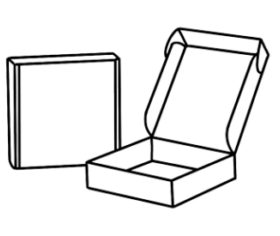 Bául
Bául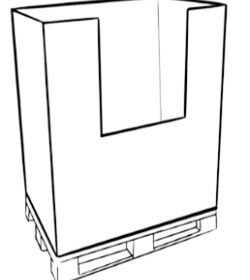 Box-pallet
Box-pallet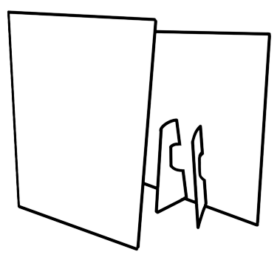 Displays
Displays Estuchería
Estuchería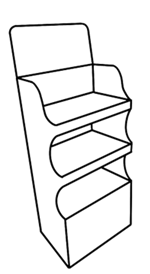 Expositor
Expositor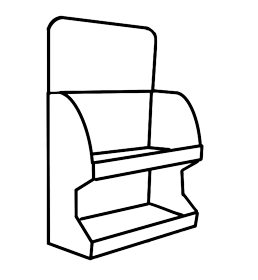 Exp.sobremesa
Exp.sobremesa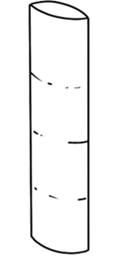 Tótem
Tótem Otros
Otros
